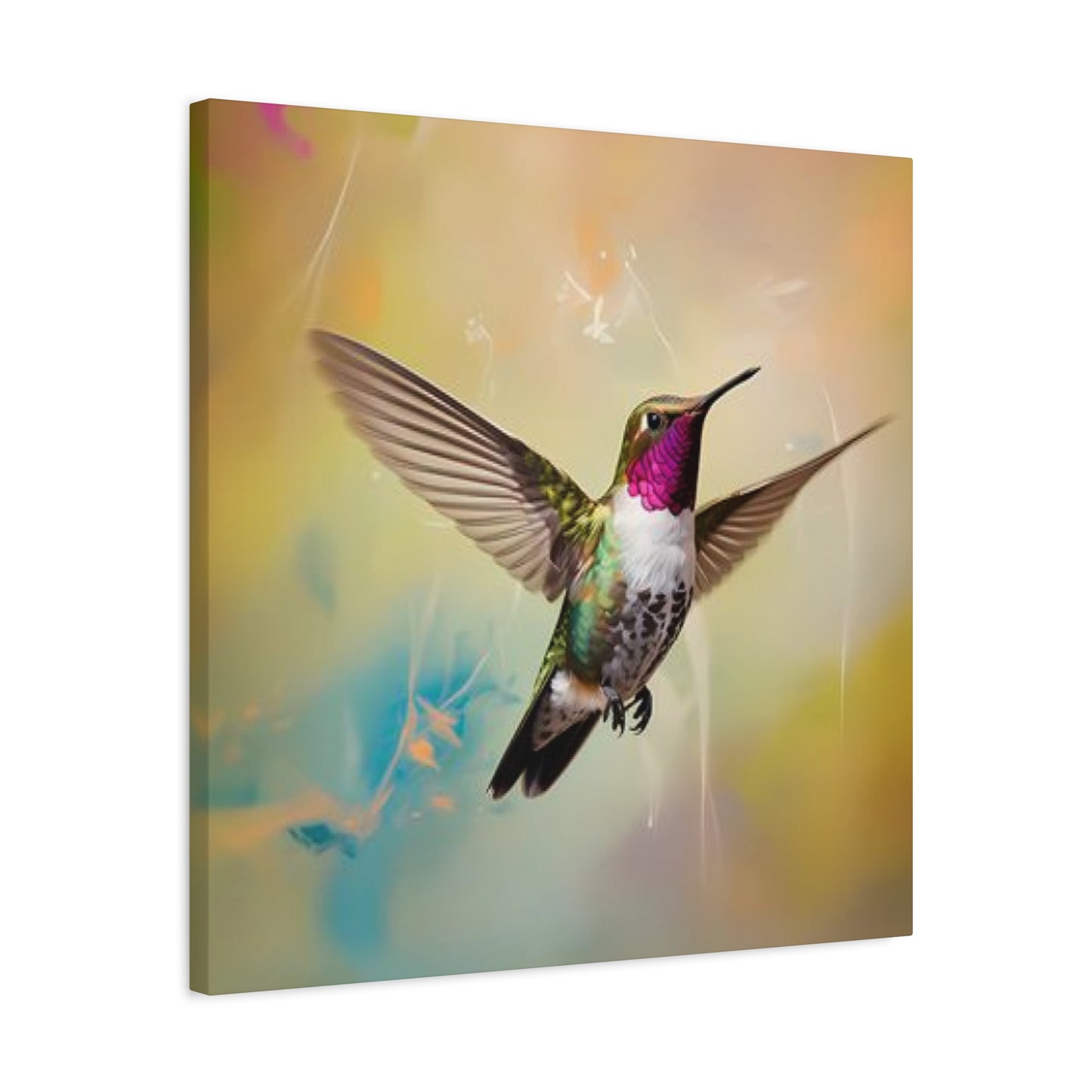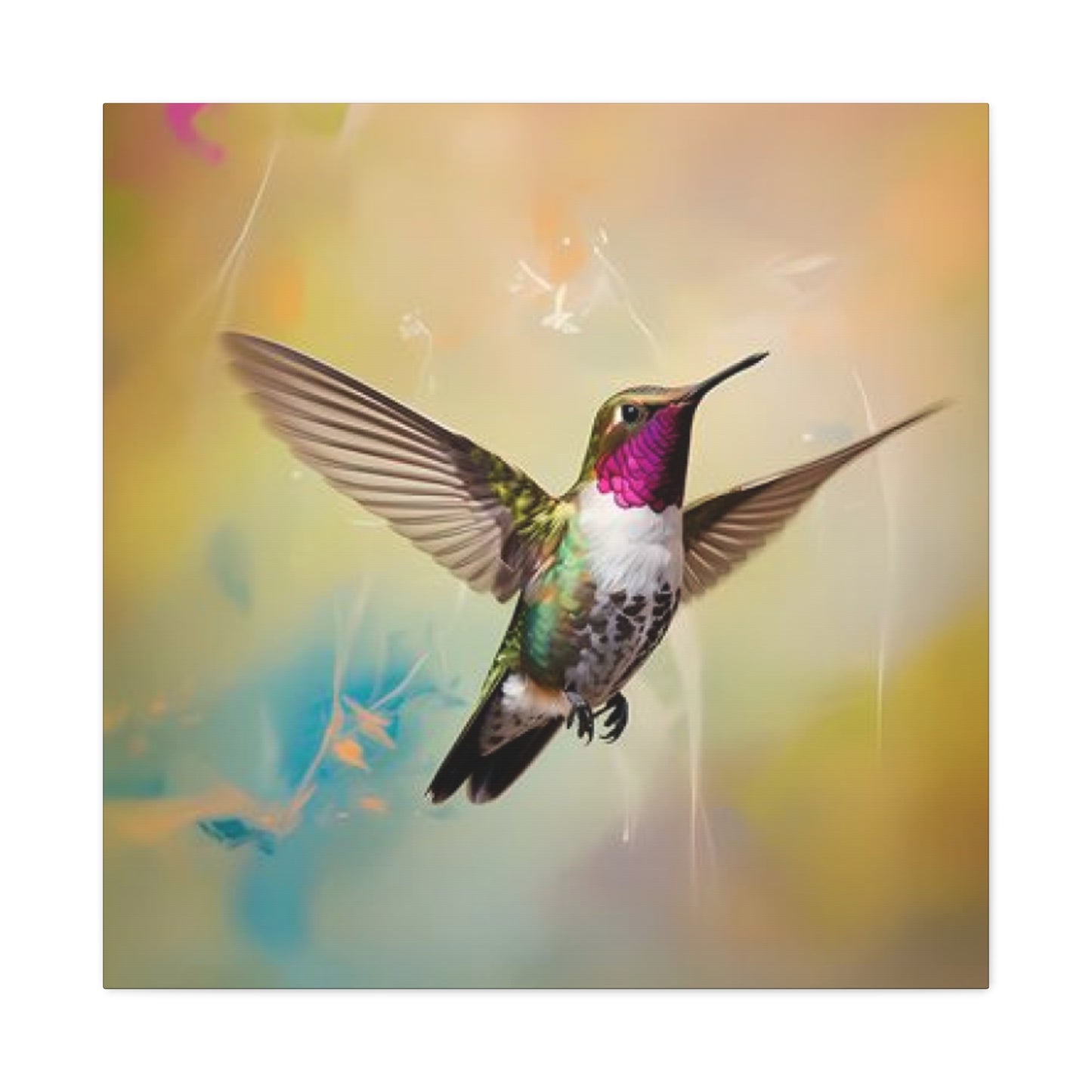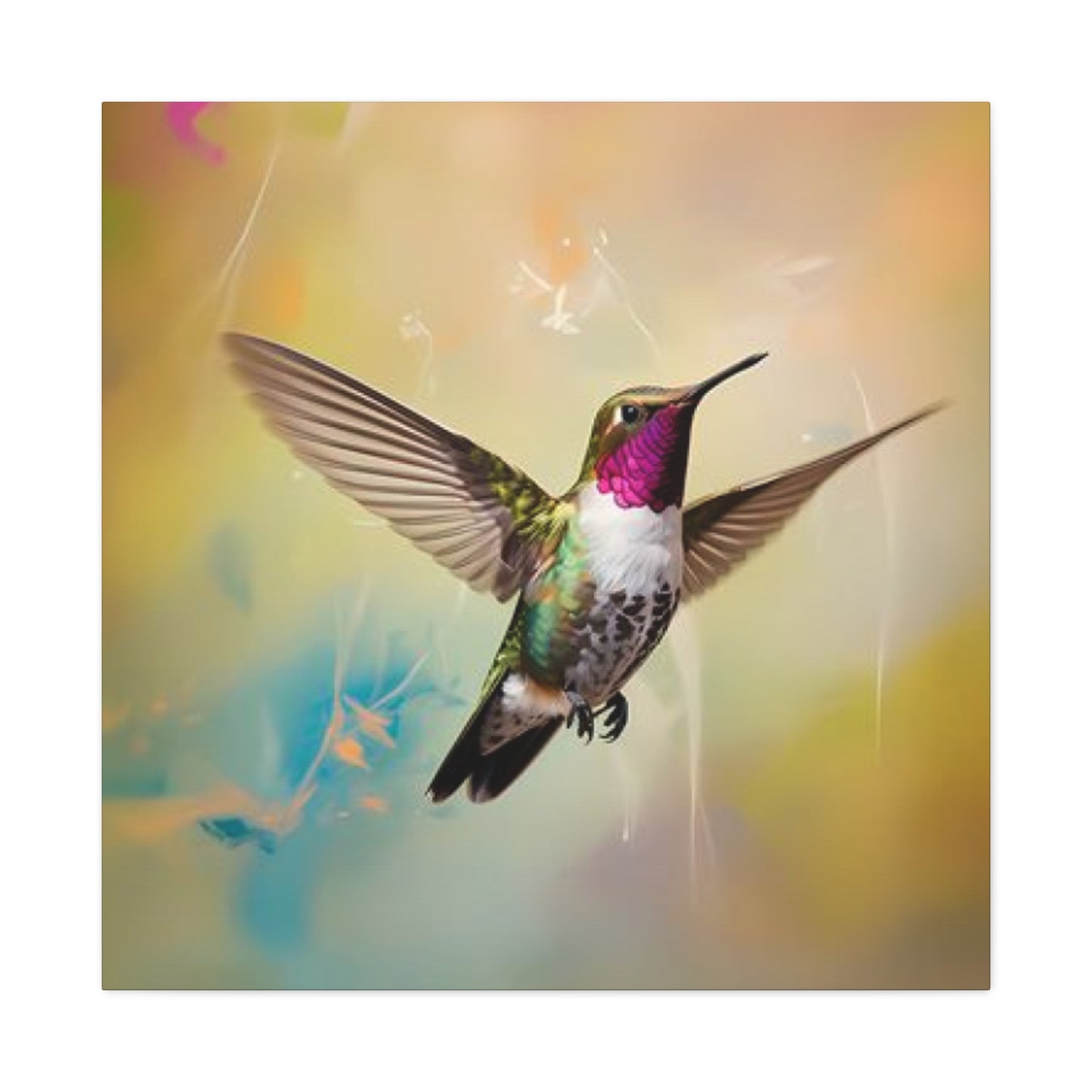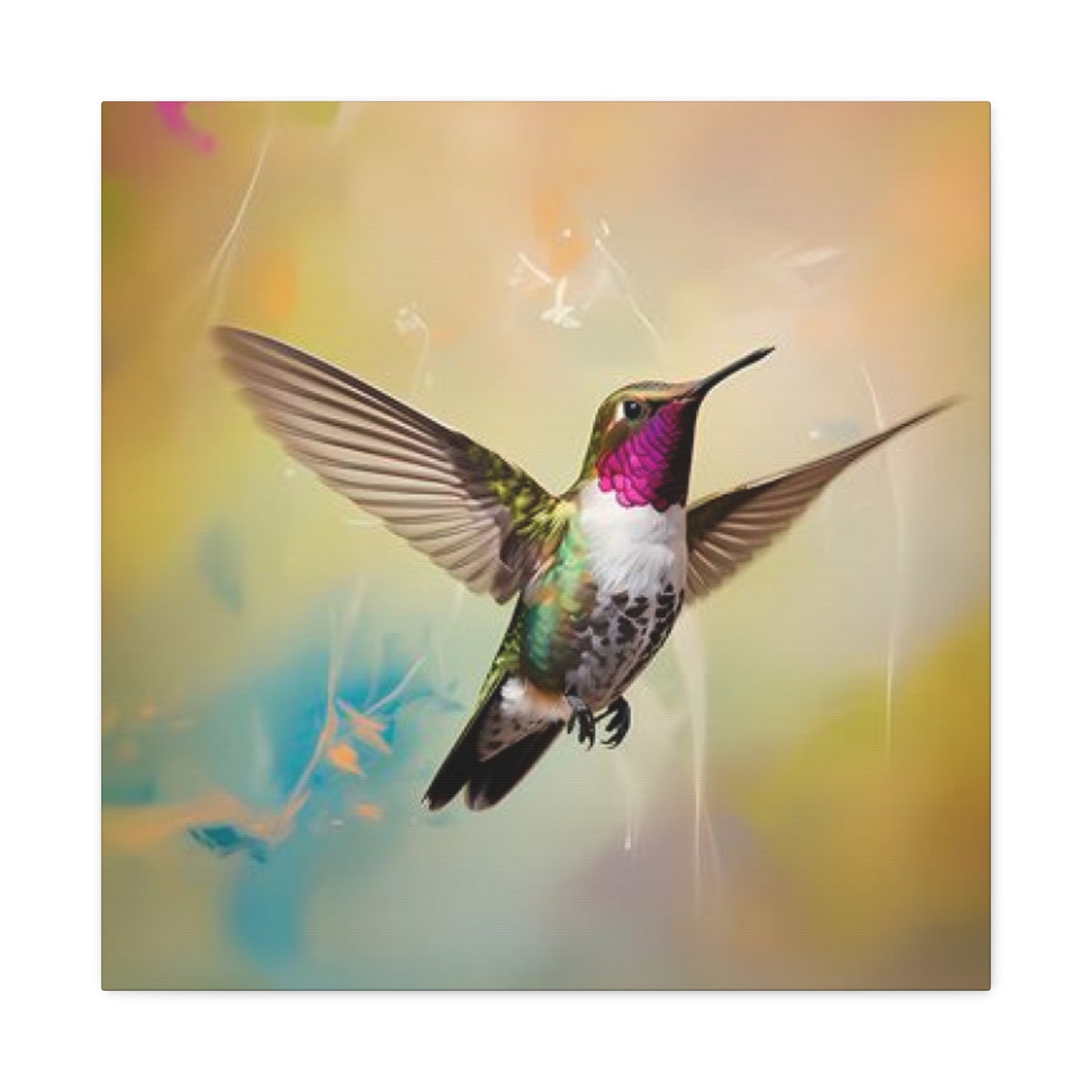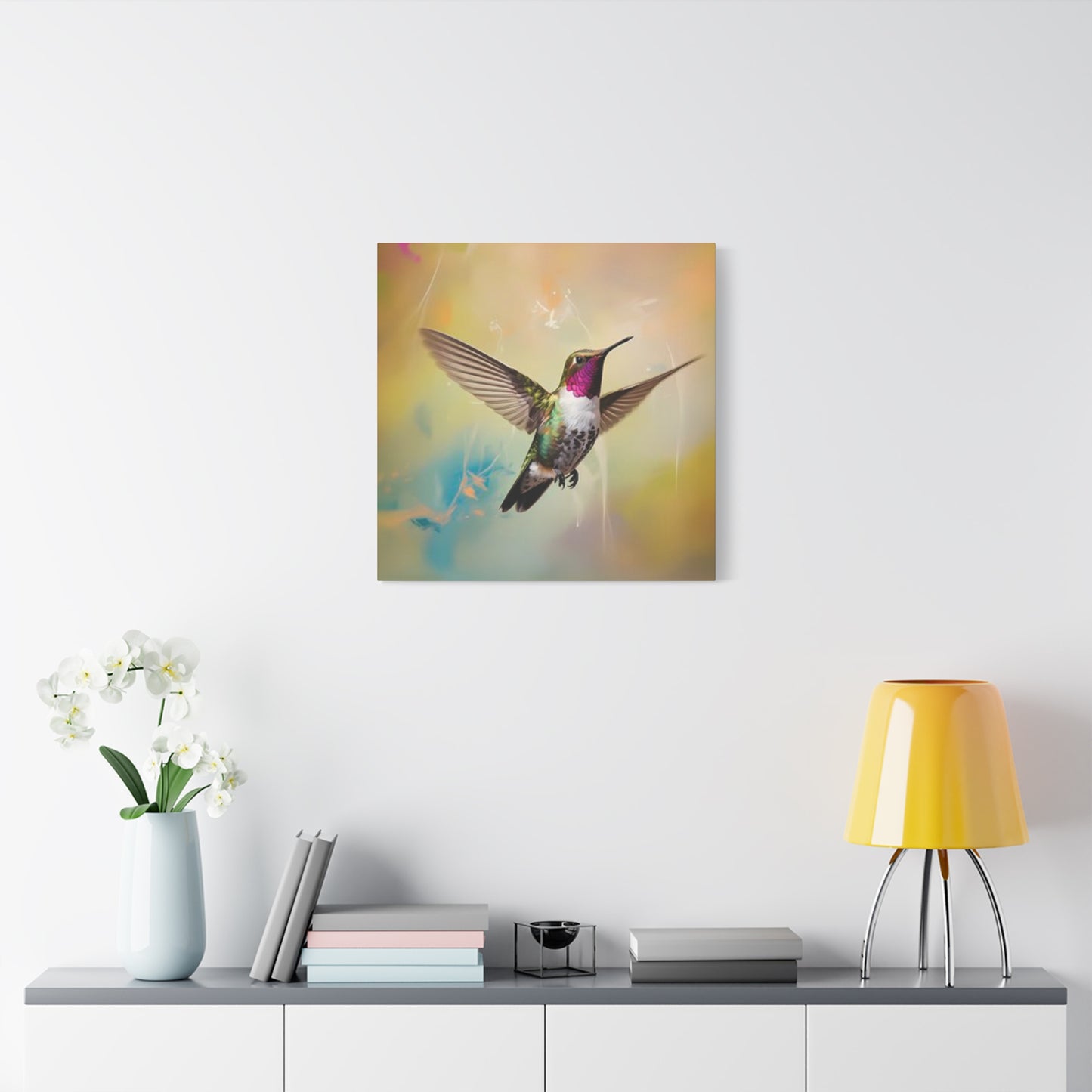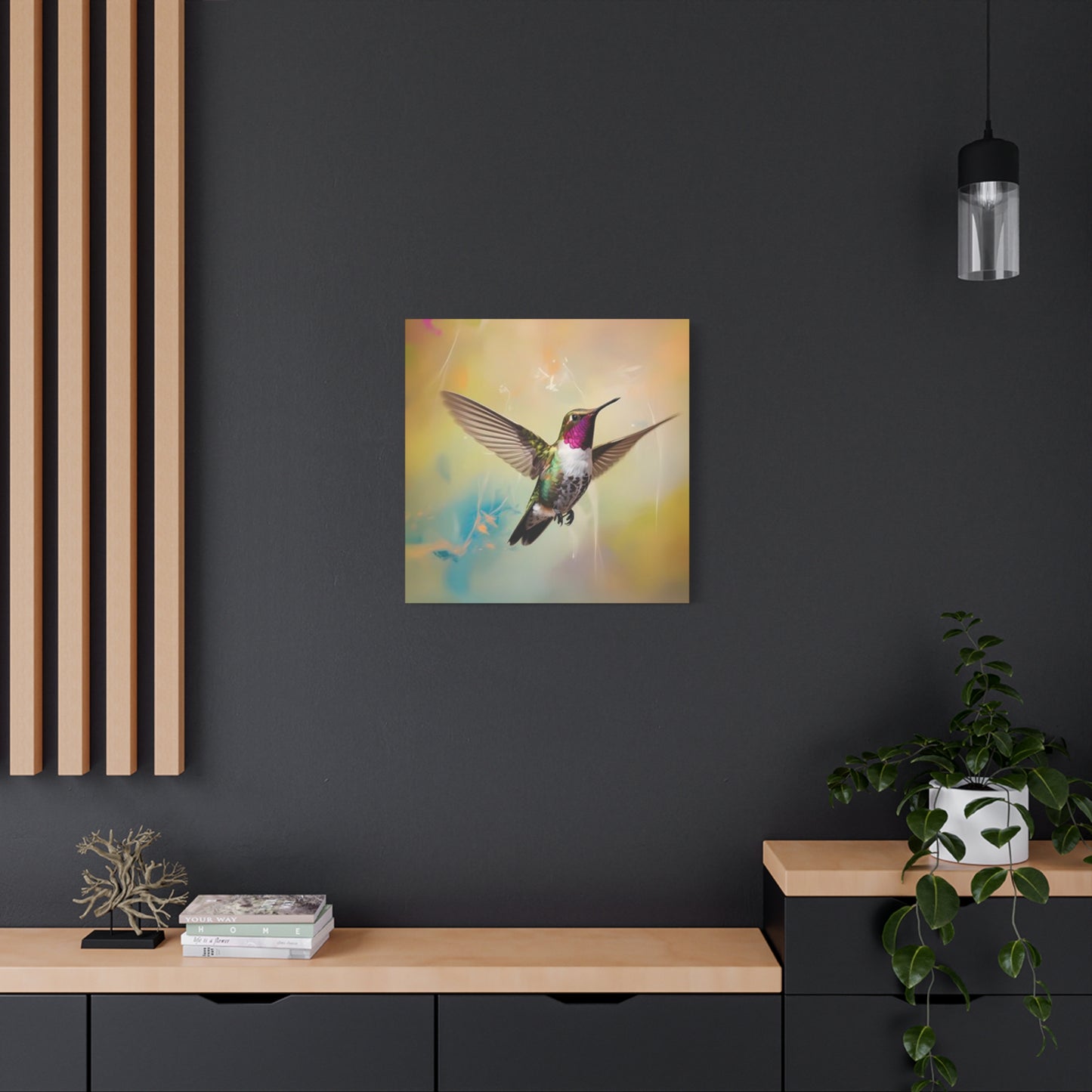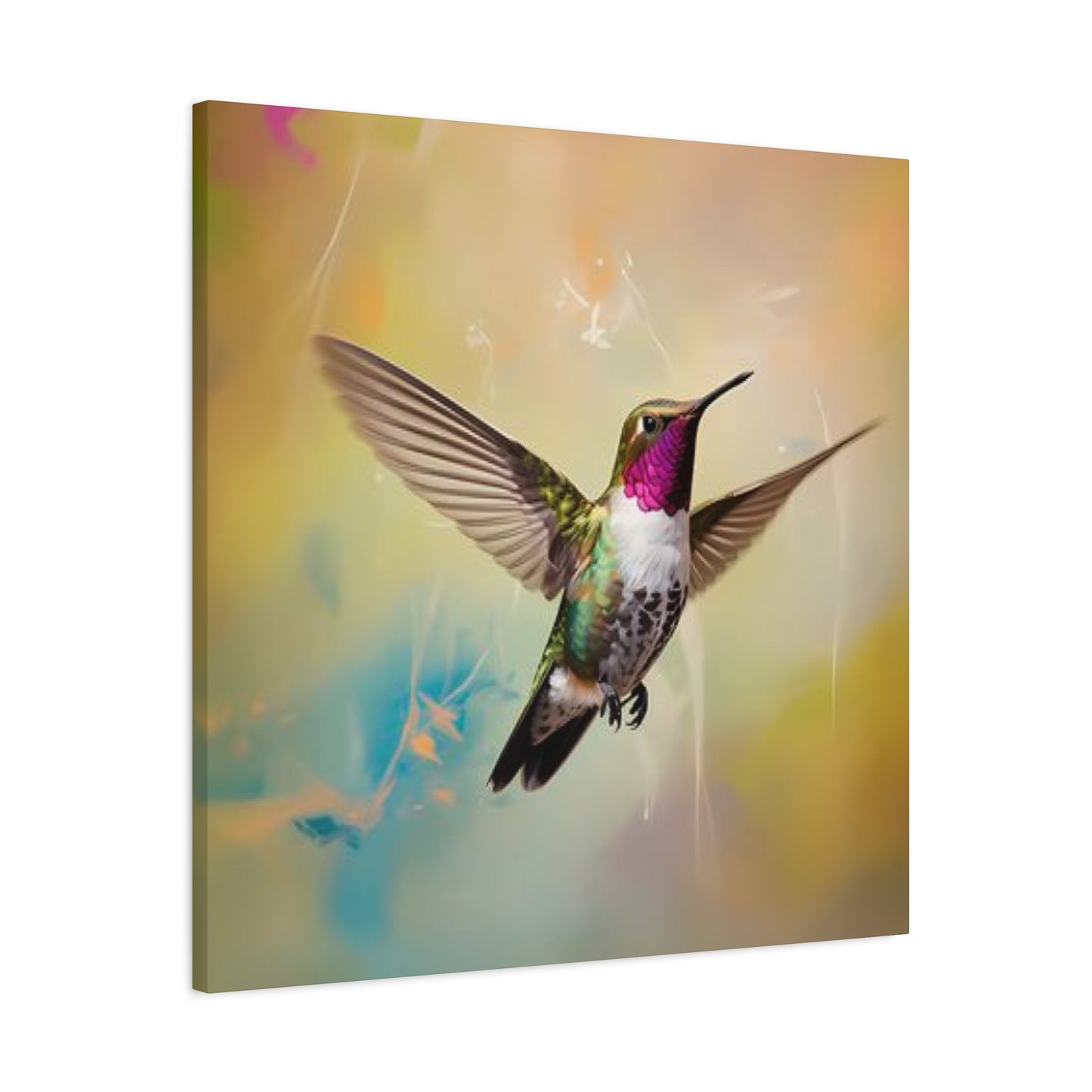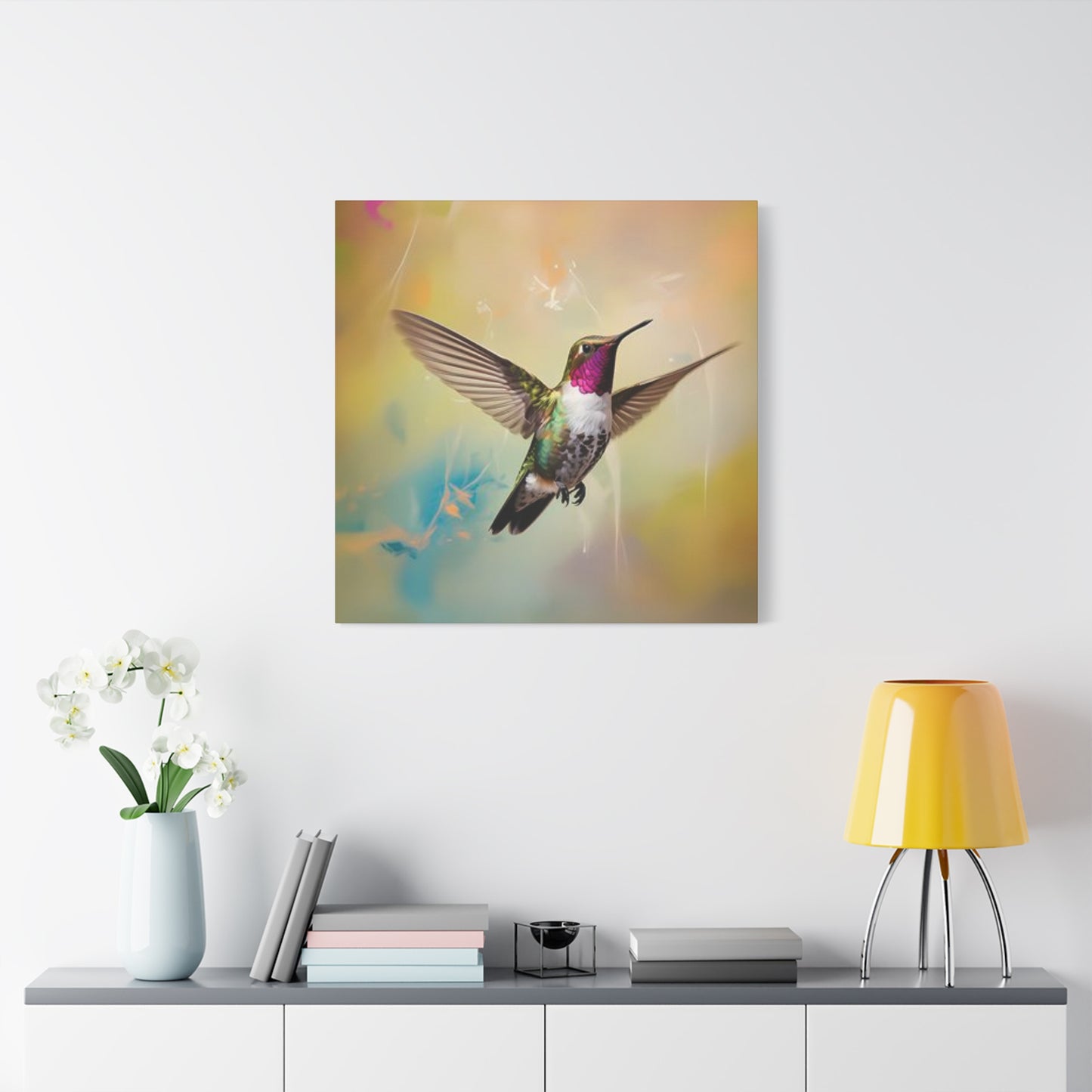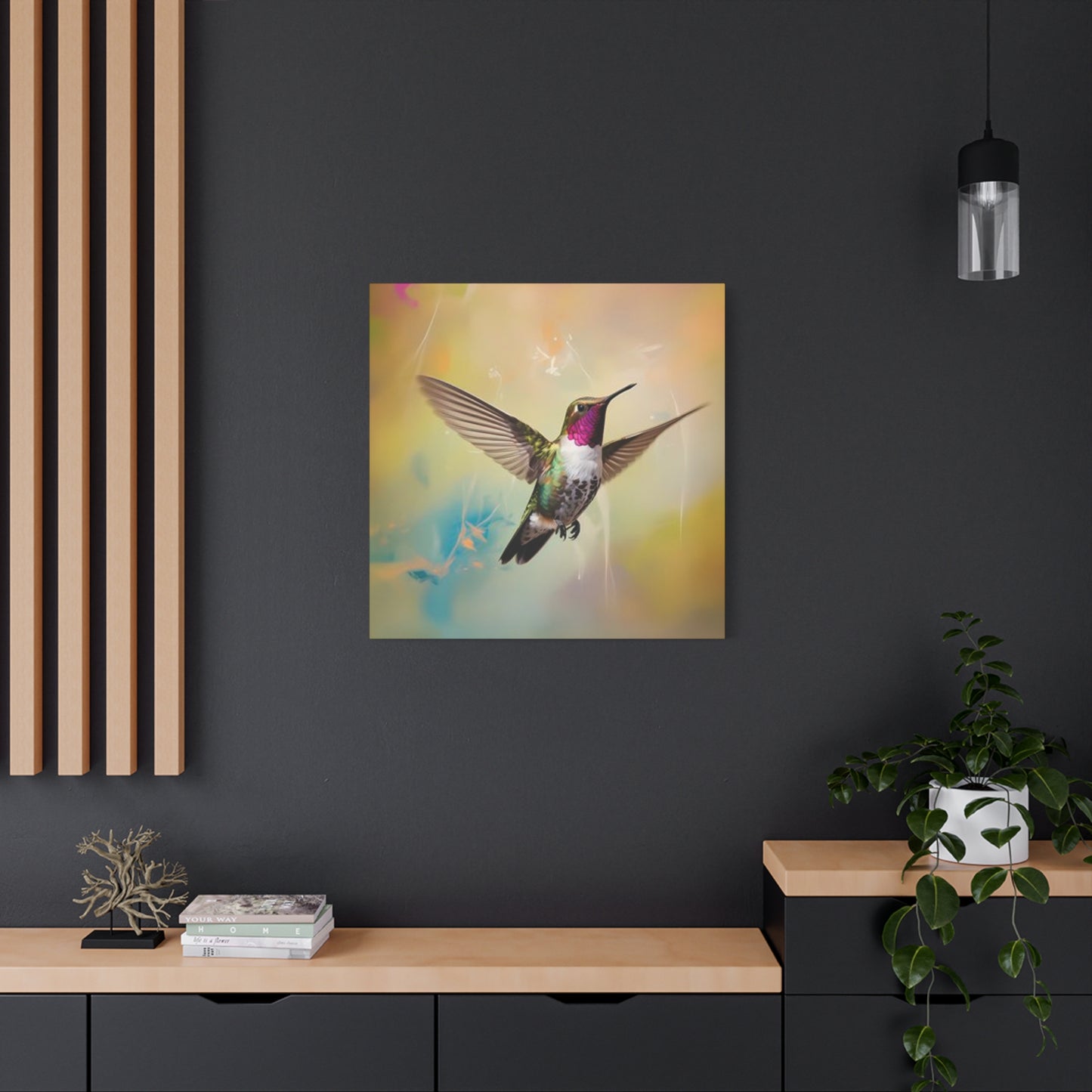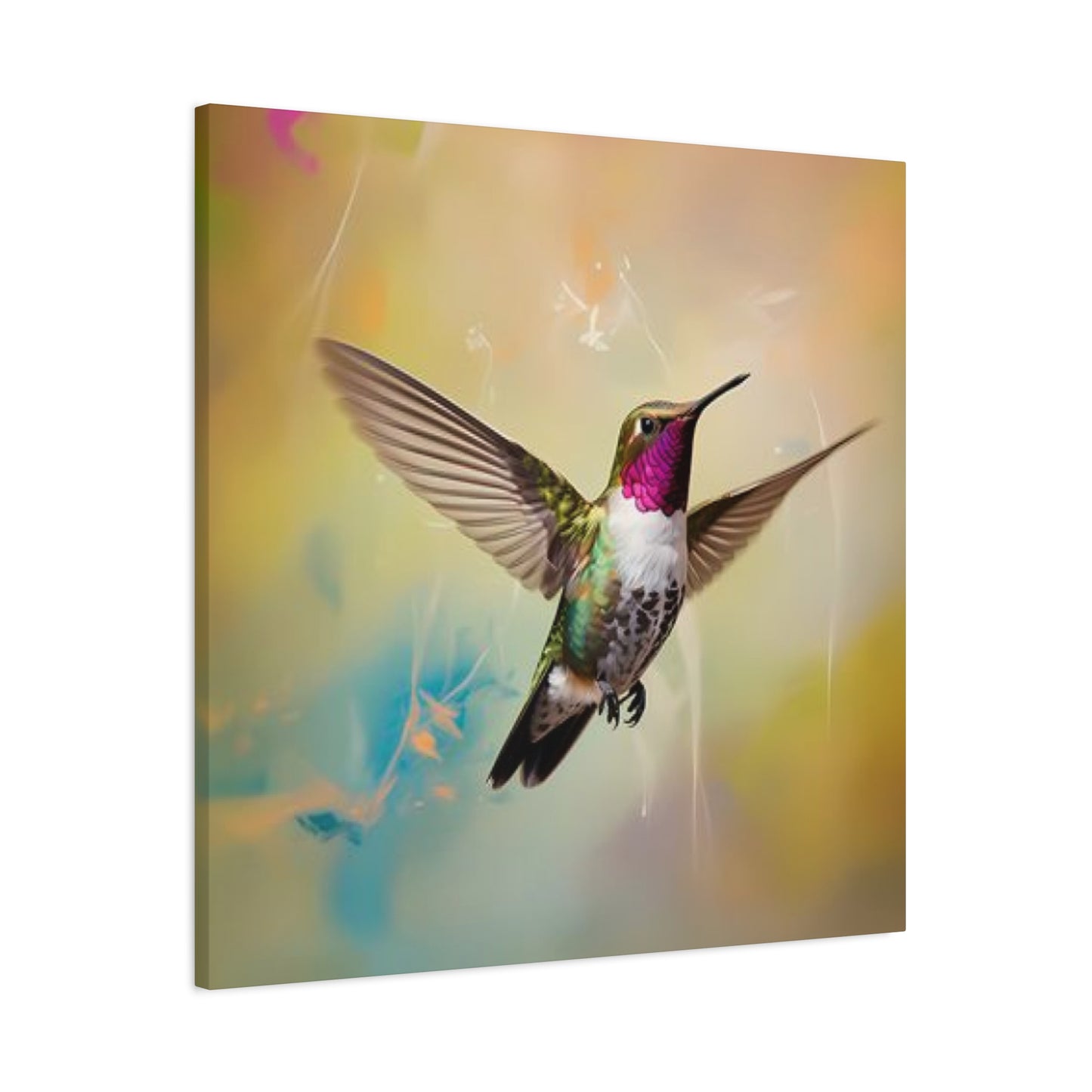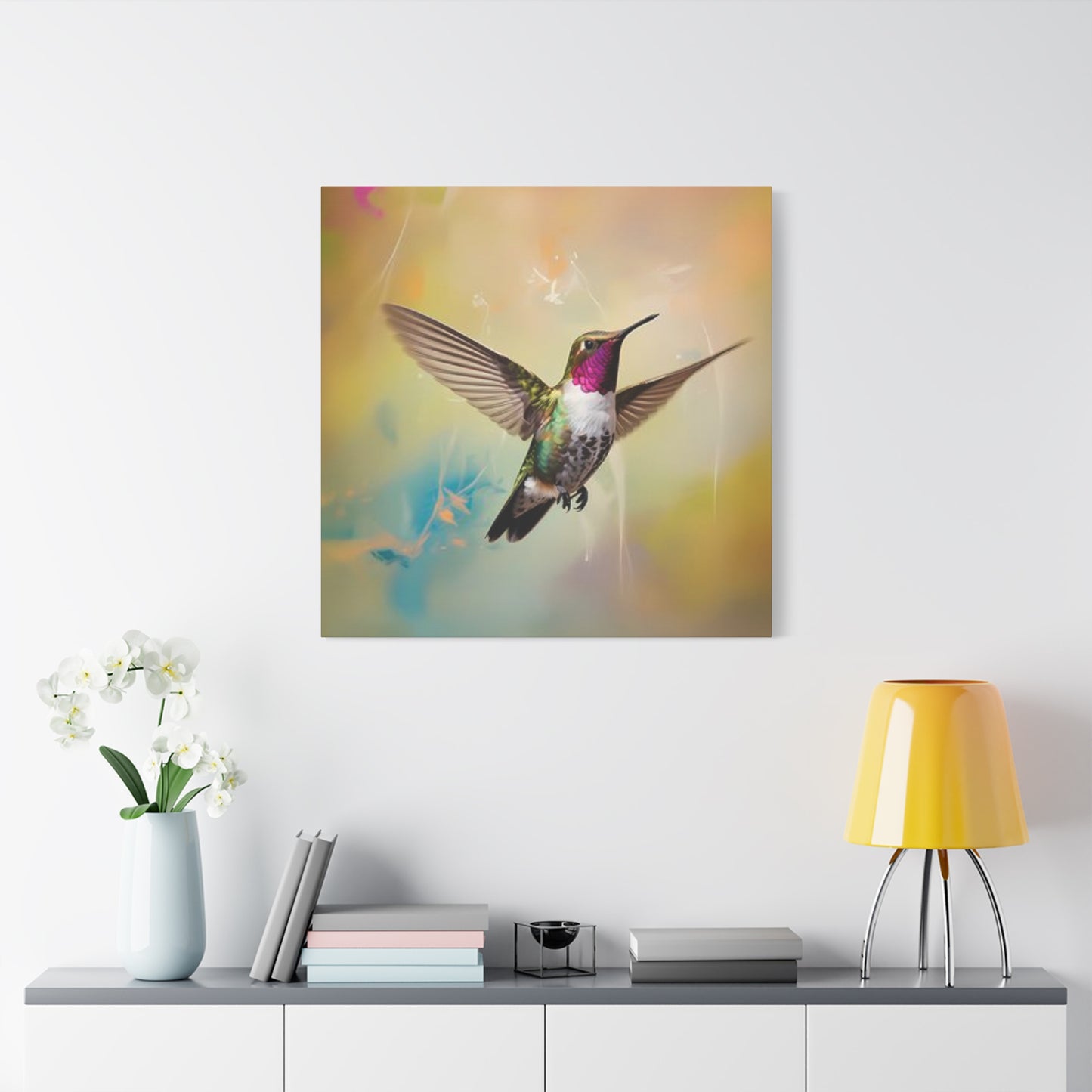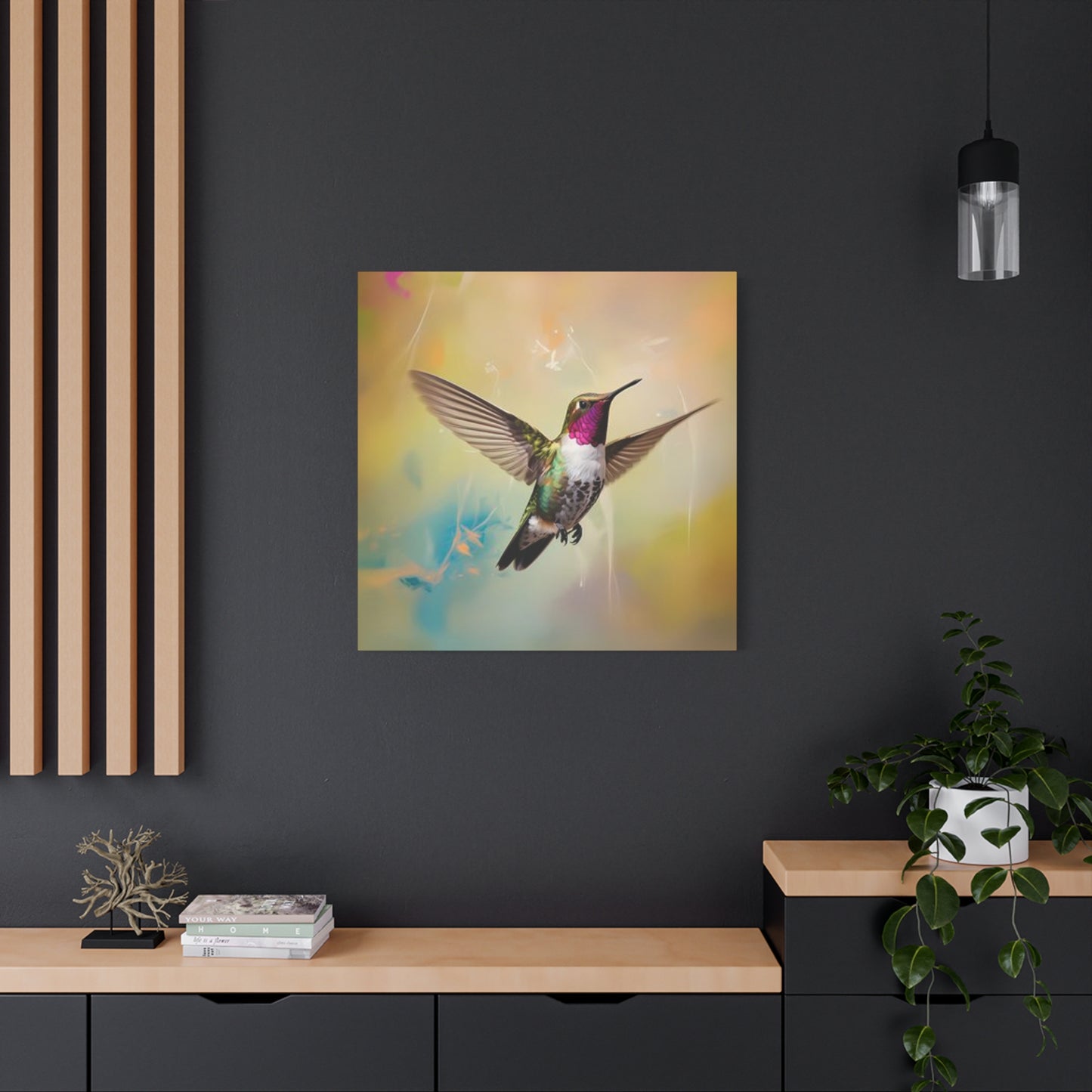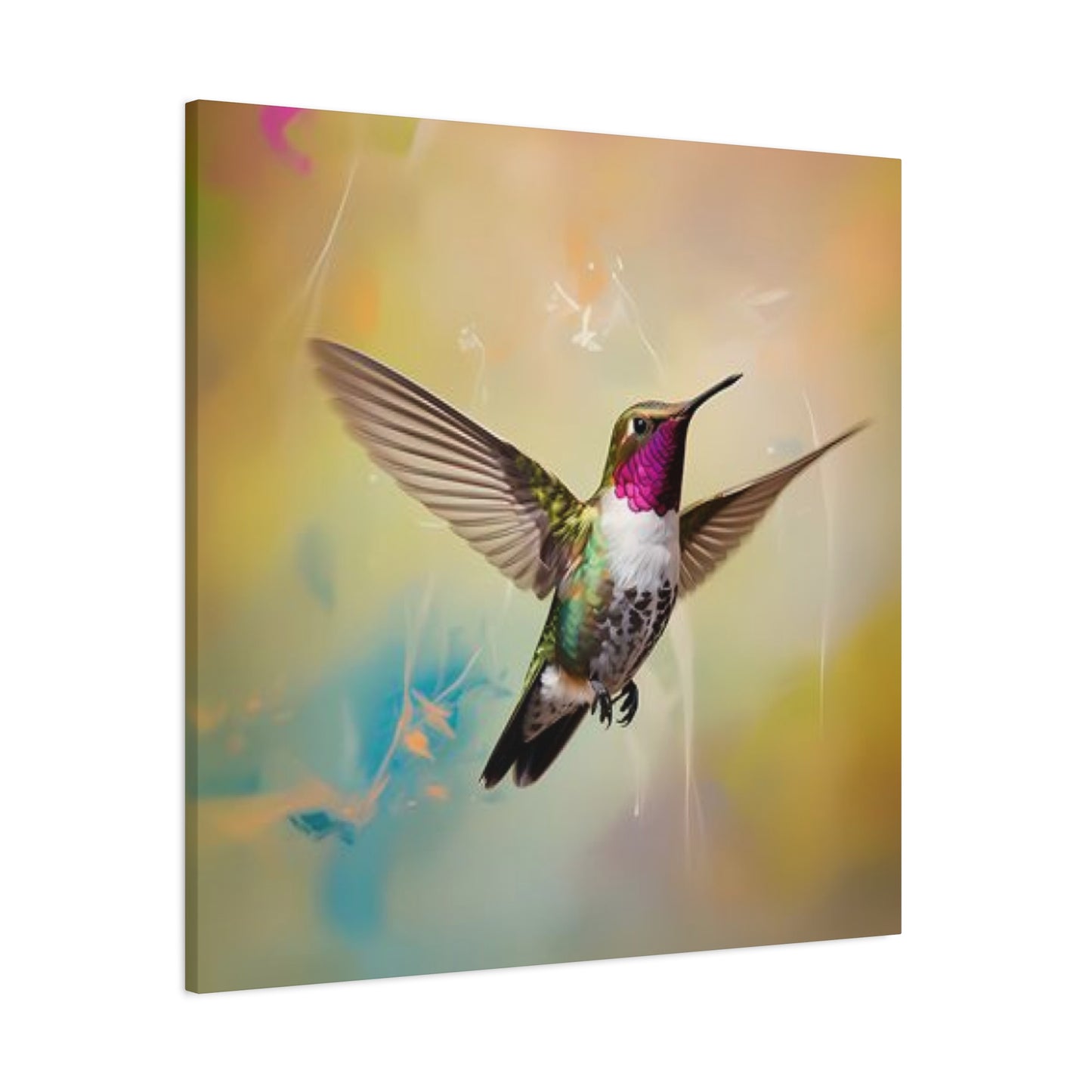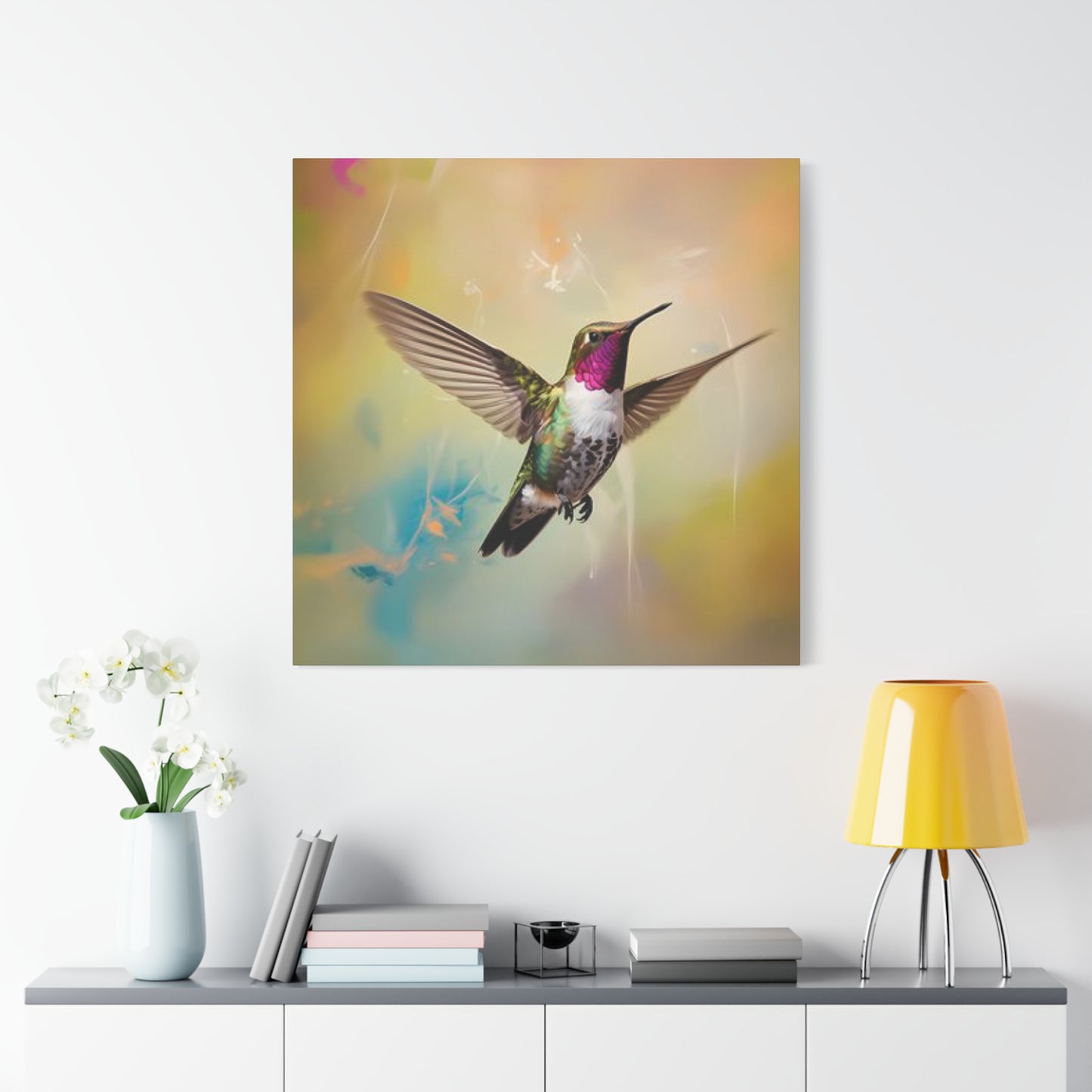Flying Hummingbird Painting wall art: Bringing Nature's Beauty
The enchanting world of hummingbird artwork offers homeowners and art enthusiasts an opportunity to incorporate nature's most delicate and vibrant creatures into their living spaces. These remarkable paintings capture the ethereal beauty, dynamic movement, and vivid colors of hummingbirds in flight, creating stunning visual focal points that breathe life into any room. From traditional watercolor techniques to contemporary digital interpretations, hummingbird paintings represent one of the most sought-after categories in nature-inspired home decor.
The appeal of flying hummingbird paintings extends far beyond their aesthetic value. These artworks embody themes of freedom, joy, resilience, and the celebration of life's fleeting moments. As these tiny birds hover gracefully among flowers, their wings beating at incredible speeds, they remind viewers of the importance of finding beauty in motion and appreciating the delicate balance of nature. This symbolic richness makes hummingbird paintings particularly meaningful additions to homes, offices, and therapeutic spaces.
Modern interior design trends increasingly favor artwork that creates emotional connections while serving as conversation starters. Hummingbird paintings excel in both aspects, offering viewers a moment of tranquility and wonder while sparking discussions about nature, wildlife conservation, and artistic technique. Whether displayed as single statement pieces or arranged in carefully curated collections, these paintings have the power to transform ordinary spaces into sanctuaries of natural beauty.
The versatility of hummingbird artwork allows it to complement various design styles, from rustic farmhouse aesthetics to sleek contemporary interiors. Artists working in this genre employ diverse techniques and mediums, including oil paintings, watercolors, acrylics, mixed media, and digital art, ensuring that collectors can find pieces that align perfectly with their personal taste and existing decor. The range of available styles spans from hyperrealistic depictions that showcase every feather detail to impressionistic interpretations that capture the essence of movement and energy.
Art collectors and casual buyers alike are drawn to hummingbird paintings because they represent nature's artistry in its purest form. These tiny birds, with their iridescent feathers and incredible agility, have inspired artists for generations. The challenge of capturing their rapid wing movements, delicate features, and vibrant coloration requires exceptional skill and observation, making quality hummingbird paintings valuable additions to any art collection.
The market for hummingbird artwork continues to grow as more people seek to bring elements of nature into their homes. This trend reflects a broader cultural shift toward biophilic design principles, which recognize the human need for connection with the natural world. In urban environments where direct contact with wildlife may be limited, hummingbird paintings serve as windows to nature, providing daily reminders of the beauty that exists beyond concrete walls.
Hummingbird Paintings for Your Wall
Selecting the perfect hummingbird painting for your wall involves considering multiple factors that will influence both the immediate visual impact and long-term satisfaction with your purchase. The size of the artwork should correspond to the intended display space, with larger pieces serving as dramatic focal points in living rooms or dining areas, while smaller works can add delicate touches to bedrooms, bathrooms, or office spaces. The scale relationship between the painting and its surroundings significantly affects the overall aesthetic harmony of the room.
Color coordination plays a crucial role in successful wall art selection. Hummingbird paintings often feature vibrant greens, blues, reds, and purples that reflect the natural coloration of these birds and their preferred floral environments. When choosing artwork, consider how these colors will interact with your existing color scheme. Complementary color relationships can create dynamic visual interest, while analogous color schemes offer more subtle, harmonious effects. Some collectors prefer paintings with neutral backgrounds that allow the hummingbird to pop dramatically, while others appreciate richly colored environments that create immersive nature scenes.
The artistic style of your chosen hummingbird painting should align with your personal aesthetic preferences and the overall design theme of your space. Realistic paintings work beautifully in traditional or transitional interiors, offering detailed depictions that celebrate the intricate beauty of these remarkable birds. Abstract or impressionistic interpretations can enhance contemporary or eclectic spaces, providing artistic interpretation rather than literal representation. Mixed media works that incorporate various textures and materials add dimensional interest and tactile appeal to modern interiors.
Lighting considerations are paramount when displaying hummingbird paintings. Natural light can enhance the vibrancy of colors and create dynamic shadows that change throughout the day, but direct sunlight should be avoided to prevent fading and damage. Artificial lighting, including picture lights, track lighting, or strategically placed lamps, can highlight the artwork effectively while providing consistent illumination. LED lights are preferred for their longevity and minimal heat production, which helps preserve the painting's integrity over time.
The frame selection significantly impacts the overall presentation of your hummingbird painting. Traditional gold or silver frames can enhance classical or formal settings, while sleek black or natural wood frames complement contemporary spaces. Matting choices also affect the visual impact, with white or neutral mats creating clean, gallery-style presentations, and colored mats offering opportunities for creative coordination with room decor. The frame width and style should be proportional to both the painting size and the surrounding space to maintain visual balance.
Placement height and positioning require careful consideration to maximize viewing pleasure and room integration. The center of the artwork should typically be positioned at eye level, approximately 57-60 inches from the floor, though this may vary based on furniture placement and ceiling height. In dining rooms, artwork can be hung slightly lower to create intimate viewing experiences, while in hallways or stairwells, adjustments may be necessary to accommodate changing sight lines.
Wall preparation and installation methods vary depending on the weight and size of your chosen hummingbird painting. Lightweight pieces may require only simple picture hanging hardware, while larger or heavier works might need wall anchors or professional installation. Consider the wall material, weight distribution, and long-term stability when selecting mounting hardware. Professional framing services often provide installation guidance and can recommend appropriate hanging systems for specific pieces.
The emotional impact of your wall-mounted hummingbird painting extends beyond mere decoration. These artworks can serve as daily sources of inspiration, reminders of nature's beauty, and conversation catalysts for guests. The positioning should allow for comfortable viewing from primary seating areas or high-traffic zones where the artwork can be appreciated regularly. Multiple viewing angles should be considered, especially in open-concept living spaces where the painting may be visible from various rooms.
Seasonal considerations may influence your enjoyment of hummingbird paintings, as these birds are often associated with spring and summer imagery. However, quality artwork transcends seasonal limitations, providing year-round beauty and serving as hopeful reminders of warmer seasons during winter months. The evergreen appeal of well-chosen hummingbird paintings makes them excellent long-term investments in home decor.
Capturing the Grace of Hummingbirds in Art
The artistic challenge of capturing hummingbird grace requires exceptional skill, patience, and deep understanding of these remarkable creatures' behavior and anatomy. Artists who specialize in hummingbird paintings must possess keen observational abilities to translate the birds' rapid movements, iridescent feather patterns, and delicate proportions into static artworks that convey dynamic energy and life. This artistic pursuit combines technical proficiency with emotional sensitivity to create works that resonate with viewers on multiple levels.
Observational study forms the foundation of authentic hummingbird art. Many successful artists spend countless hours watching these birds in their natural habitats, photographing their movements, and sketching preliminary studies that capture various flight positions and behavioral moments. This research phase is crucial for understanding the subtle anatomical details that distinguish different hummingbird species, from the ruby throat of male Ruby-throated Hummingbirds to the distinctive curved bills of specialized nectar feeders.
The technical aspects of painting hummingbird wings present unique challenges due to their incredible speed and transparency during flight. Artists must master the representation of motion blur while maintaining enough detail to suggest the wing's structure and feather patterns. Various techniques are employed to achieve this effect, including soft brush work, layered glazing, and strategic use of negative space. Some artists use photographic references to study wing positions that are invisible to the naked eye, while others rely on memory and artistic interpretation to convey the essence of flight.
Color accuracy and vibrancy are paramount in hummingbird paintings, as these birds are renowned for their brilliant, iridescent plumage that changes appearance based on viewing angle and lighting conditions. Artists must understand color theory and mixing techniques to recreate the metallic sheens and rainbow effects that characterize hummingbird feathers. This often involves layering transparent colors, using metallic pigments, or employing special painting techniques that simulate the prismatic effects of natural iridescence.
Compositional considerations in hummingbird paintings involve balancing the bird's small scale with environmental elements that provide context and visual interest. Floral backgrounds are popular choices, offering opportunities to explore color relationships and create natural feeding scenarios. The positioning of flowers, leaves, and other decorative elements must support rather than compete with the hummingbird, creating harmonious compositions that guide the viewer's eye to the focal point while providing rich, detailed surroundings.
Different artistic mediums offer unique advantages for capturing hummingbird grace. Watercolor excels at creating translucent effects that mirror the birds' delicate nature, while oil paints provide richness and depth suitable for detailed feather rendering. Acrylic paints offer versatility and quick drying times that accommodate various painting techniques, and digital media allows for precise control over colors and effects that would be difficult to achieve with traditional materials. Mixed media approaches combine multiple techniques to maximize expressive possibilities.
The emotional dimension of hummingbird art involves conveying the birds' spirited personalities and symbolic associations. These creatures represent joy, resilience, and the ability to find sweetness in life, themes that resonate deeply with viewers seeking uplifting art for their homes. Artists must infuse their technical skills with emotional sensitivity to create works that transcend mere representation and touch viewers' hearts and imagination.
Contemporary hummingbird artists often incorporate modern painting techniques and contemporary color palettes while respecting the timeless appeal of their subjects. This balance between innovation and tradition allows for fresh interpretations that speak to modern audiences while honoring the classical beauty that has made hummingbird art enduringly popular. Experimental approaches might include abstract backgrounds, unusual color combinations, or innovative compositional formats that challenge traditional nature painting conventions.
The preservation of artistic authenticity in hummingbird paintings requires ongoing study and respect for the natural world. Artists who create the most compelling works often maintain connections with wildlife conservation efforts, bird watching communities, and scientific research that deepens their understanding of hummingbird behavior and ecology. This commitment to accuracy enhances the educational value of their art while ensuring that their creative interpretations remain grounded in biological reality.
Decorating Your Home with Flying Hummingbird Paintings
Incorporating flying hummingbird paintings into your home decoration scheme requires thoughtful planning and consideration of how these dynamic artworks will interact with your existing design elements. The movement and energy inherent in hummingbird imagery can significantly influence the mood and atmosphere of any space, making strategic placement and styling crucial for achieving desired decorative effects. These paintings serve as more than mere wall coverings; they become integral components of your home's visual narrative and emotional landscape.
Living room integration of hummingbird paintings can create stunning focal points that draw attention and spark conversation. Above a fireplace mantel, a large hummingbird painting becomes the room's centerpiece, commanding attention while providing a natural gathering point for social interactions. The colors within the painting can be echoed in throw pillows, area rugs, or decorative accessories to create cohesive design themes. Consider the room's primary function when selecting artwork scale and intensity; busy family areas might benefit from calming, soft-toned pieces, while formal living spaces can accommodate more dramatic, vibrant compositions.
Dining room applications for hummingbird paintings offer opportunities to enhance meal experiences with uplifting natural imagery. The dining area's intimate nature makes it ideal for detailed paintings that reward close examination, allowing diners to discover new elements during extended viewing. Hummingbird paintings in dining spaces can stimulate appetite and conversation while creating pleasant associations with nourishment and natural abundance. The artwork's colors should complement your dining furniture and table settings, creating harmonious environments for both casual family meals and formal entertaining.
Bedroom incorporation of hummingbird paintings can transform sleeping spaces into serene retreats that promote rest and positive dreams. The gentle, uplifting nature of hummingbird imagery makes these paintings particularly suitable for bedroom environments where peaceful, optimistic feelings are desired. Placement above the bed or on accent walls can create soothing focal points that contribute to relaxation and stress reduction. Soft, muted color palettes work especially well in bedrooms, avoiding overstimulation while maintaining the artwork's inherent beauty and symbolism.
Kitchen and dining nook applications celebrate the connection between hummingbirds and nourishment, making these spaces natural locations for hummingbird artwork. Smaller paintings or print series can add charm to breakfast nooks, while larger pieces can enhance kitchen peninsula or island areas. The practical considerations of kitchen environments require careful attention to moisture, heat, and cleaning requirements when selecting and positioning artwork. Sealed frames and appropriate placement away from cooking areas help preserve artwork integrity.
Bathroom integration of hummingbird paintings can transform utilitarian spaces into spa-like retreats that promote relaxation and self-care. The moisture-rich environment requires special consideration of framing and protective measures, but the reward is a unique decorative opportunity that most homeowners overlook. Small to medium-sized pieces work well in bathrooms, providing visual interest without overwhelming the typically compact spaces. The refreshing associations of hummingbirds with gardens and nature align perfectly with the cleansing and renewal functions of bathroom spaces.
Hallway and entryway applications create welcoming first impressions and provide ongoing enjoyment for household members and guests. Hummingbird paintings in entry areas set positive, energetic tones for the entire home while showcasing the residents' appreciation for nature and art. Gallery wall arrangements featuring multiple hummingbird pieces or combining hummingbird paintings with complementary nature artwork can create impressive displays in longer hallways or stairway areas.
Home office and study spaces benefit from the inspirational qualities of hummingbird paintings, which can stimulate creativity and provide mental breaks during intense work periods. The symbolism of persistence and agility associated with hummingbirds makes them particularly appropriate for work environments where these qualities are valued. Placement within the natural sight line from work areas allows for easy viewing and contemplation without requiring significant head movement or workspace disruption.
Seasonal rotation strategies for hummingbird paintings can keep your home decoration fresh and responsive to changing moods and preferences. Some collectors maintain multiple pieces that they rotate based on seasons, holidays, or personal preferences, allowing for ongoing variety and renewed appreciation for individual artworks. Storage considerations for rotated pieces should include proper protection from humidity, temperature fluctuations, and physical damage.
Lighting integration enhances the impact of hummingbird paintings while protecting them from damage. Picture lighting, accent spotlights, and ambient lighting all contribute to optimal artwork presentation. Natural light exposure should be managed to prevent fading while taking advantage of the dynamic color changes that occur throughout the day. Window treatments, UV-filtering glass, and strategic positioning can help balance light exposure with artwork preservation.
Collectible Hummingbird Artwork You'll Love
The world of collectible hummingbird artwork offers enthusiasts opportunities to build meaningful collections that appreciate in both personal significance and potential market value. Collecting hummingbird art requires understanding the factors that contribute to artwork desirability, rarity, and long-term value potential. Successful collectors develop expertise in recognizing quality artworks, emerging artists, and market trends that influence collection building strategies.
Artist recognition and reputation significantly impact collectibility and value potential. Established artists with proven track records, gallery representation, and museum collections command higher prices and offer greater investment potential. However, emerging artists working in hummingbird themes may provide opportunities for prescient collectors to acquire future masterpieces at accessible prices. Research into artist backgrounds, exhibition histories, and critical reception provides valuable insights for collection building decisions.
Limited edition prints and original paintings occupy different positions in the collectible art market. Original paintings offer unique ownership opportunities and typically appreciate more significantly over time, while limited edition prints provide accessibility to renowned artists' works at lower price points. Edition sizes, printing techniques, and artist involvement in the printing process all affect desirability and value potential. Hand-enhanced prints that include artist touches to each piece bridge the gap between mass-produced items and unique originals.
Provenance and documentation play crucial roles in collectible artwork authentication and value preservation. Certificates of authenticity, gallery purchase receipts, and exhibition records establish artwork legitimacy and enhance resale potential. Proper documentation should be maintained throughout the ownership period, including conservation records, insurance appraisals, and any scholarly attention the pieces may receive. Digital documentation with high-resolution photographs can supplement physical records and aid in insurance claims if necessary.
Condition assessment and preservation considerations significantly impact collectible artwork value and longevity. Understanding common deterioration patterns, appropriate storage conditions, and conservation requirements helps collectors make informed acquisition decisions and maintain their investments properly. Professional conservation services may be necessary for significant pieces, and the costs associated with proper care should be factored into collection budgets.
Market trends in hummingbird collectibles reflect broader art market conditions while maintaining specific characteristics related to nature art and wildlife themes. Environmental consciousness, urbanization trends, and generational preferences all influence demand for hummingbird artwork. Collectors who understand these market dynamics can make strategic acquisition and disposition decisions that enhance their collections' value and personal satisfaction.
Specialized collecting themes within hummingbird art offer opportunities for focused collection building. Some collectors concentrate on specific species, geographic regions, or artistic techniques, while others focus on particular time periods or artistic movements. Themed approaches can create more coherent collections while potentially enhancing expertise and market recognition within specialized niches.
Gallery relationships and dealer networks provide collectors with access to quality artworks, market information, and professional services. Establishing relationships with reputable galleries, artists' representatives, and fellow collectors creates networks that facilitate acquisition opportunities and knowledge sharing. Gallery opening receptions, art fair participation, and collector group involvement provide education and networking opportunities that enhance collecting success.
Investment considerations in hummingbird art collecting require balancing personal enjoyment with financial objectives. While art should primarily be acquired for aesthetic pleasure and personal satisfaction, understanding investment principles can inform collection building strategies. Diversification, quality over quantity approaches, and long-term holding strategies typically produce better results than speculative trading in collectible artwork markets.
Storage and display rotation allow collectors to enjoy extensive collections while providing proper care for artworks not currently on display. Climate-controlled storage, proper hanging systems, and careful handling procedures preserve artwork condition and value. Digital cataloging systems help track collection inventory, condition reports, and insurance coverage while facilitating collection management and sharing with family, friends, or potential buyers.
Authentication services and expert opinions provide security for significant artwork purchases and collection valuations. Professional appraisers, artist estate representatives, and academic experts can verify attributions and provide market valuations that support insurance coverage and estate planning. The costs of professional services should be weighed against the potential benefits of confirmed authenticity and accurate valuations.
The Symbolism of Hummingbirds in Art
Hummingbird symbolism in artistic representation encompasses rich traditions that span cultures, spiritual beliefs, and psychological interpretations. These tiny creatures carry profound meaning that transcends their physical size, making them powerful subjects for artists seeking to convey complex emotional and spiritual themes. Understanding the symbolic dimensions of hummingbird art enhances appreciation and informs collection and display decisions for those drawn to deeper meaning in their artistic choices.
Cultural interpretations of hummingbirds vary significantly across different societies and historical periods. Native American traditions often associate hummingbirds with healing, love, and good fortune, viewing their presence as omens of positive change and spiritual blessings. These cultural associations infuse hummingbird art with layers of meaning that resonate particularly strongly with viewers familiar with indigenous wisdom traditions. Artists working within these cultural frameworks often incorporate traditional symbols, colors, and compositional elements that honor ancestral beliefs while creating contemporary artistic expressions.
Spiritual symbolism connects hummingbirds with themes of resurrection, eternity, and the soul's journey between worlds. Their ability to hover motionlessly while maintaining rapid wing movement suggests the balance between action and meditation, making them symbols of spiritual practices that combine activity with inner stillness. Many viewers find hummingbird art particularly meaningful during times of spiritual seeking or personal transformation, as these images remind them of the possibility of finding stability amid life's constant motion.
Psychological associations with hummingbirds include themes of joy, resilience, and the ability to find sweetness in life's offerings. Their tireless energy and apparent delight in flower nectar make them symbols of optimism and positive outlook that can provide emotional support during challenging times. Therapeutic environments often feature hummingbird artwork because of these uplifting associations, and many individuals choose hummingbird paintings for their homes specifically to cultivate more positive emotional atmospheres.
The symbolism of freedom and independence emerges from hummingbirds' remarkable flying abilities and migratory patterns. Their capacity for precise aerial maneuvers, backward flight, and sustained hovering represents liberation from conventional limitations and the courage to chart unique life paths. Artists often emphasize these themes through dynamic compositions that showcase flight capabilities or by depicting hummingbirds in expansive natural settings that suggest unlimited possibilities.
Love and attraction symbolism derives from hummingbirds' role in flower pollination and their elaborate courtship displays. The intimate relationship between hummingbirds and flowers creates natural metaphors for romantic love, mutual benefit, and the beauty that emerges from harmonious relationships. Wedding gifts, anniversary presents, and romantic settings often feature hummingbird art because of these associations with love, devotion, and partnership.
Transformation and renewal themes connect hummingbirds with personal growth and positive change. Their seasonal migrations, territorial behaviors, and rapid life cycles suggest the possibility of reinvention and fresh starts. Individuals experiencing major life transitions often find hummingbird art particularly meaningful, as these images serve as reminders that change can be beautiful and that new opportunities await those willing to embrace transformation.
Mindfulness and present-moment awareness symbolism emerges from hummingbirds' intense focus on immediate tasks and their apparent ability to find complete satisfaction in simple pleasures. Their dedication to flower nectar gathering and their obvious enjoyment of this activity suggest the value of mindful attention to life's daily offerings. Meditation spaces, yoga studios, and other mindfulness-focused environments often incorporate hummingbird imagery to support contemplative practices.
Artistic interpretation of hummingbird symbolism varies significantly among individual artists and artistic movements. Some creators emphasize literal representation that celebrates the birds' natural beauty, while others use hummingbird imagery as metaphorical vehicles for personal or universal themes. Abstract interpretations may focus on movement, color, or energy patterns that capture symbolic essence without literal representation, allowing viewers to project their own meanings onto the artworks.
Contemporary relevance of hummingbird symbolism includes environmental consciousness and the fragility of natural systems. As climate change and habitat destruction threaten hummingbird populations, their artistic representation takes on urgent conservation meanings that extend beyond traditional symbolic associations. Artists working with hummingbird themes may incorporate subtle or explicit environmental messages that connect aesthetic appreciation with ecological responsibility.
Universal appeal of hummingbird symbolism transcends cultural boundaries while respecting specific traditional meanings. The birds' inherent beauty, fascinating behaviors, and positive associations make them accessible subjects for diverse audiences while maintaining depth for those seeking richer symbolic content. This versatility contributes to the enduring popularity of hummingbird art across different demographics and cultural contexts.
Limited Edition Hummingbird Paintings
Limited edition hummingbird paintings occupy a special position in the art market, offering collectors opportunities to own works by renowned artists at more accessible price points while maintaining exclusivity through controlled production runs. These editions combine the appeal of original artistic vision with the practical benefits of reproduction technology, creating collecting opportunities that balance affordability with investment potential and artistic merit.
Production processes for limited edition hummingbird paintings vary significantly in quality, technique, and artist involvement. High-quality limited editions begin with master paintings or drawings created specifically for reproduction, ensuring optimal color accuracy and detail preservation. Artists may work closely with master printers to oversee color matching, paper selection, and printing techniques that best represent their original vision. The level of artist involvement in the production process significantly affects the edition's value and collectibility.
Edition sizes directly influence rarity, exclusivity, and potential value appreciation. Smaller editions, typically ranging from 50 to 500 pieces, create greater scarcity and often command higher prices both initially and in secondary markets. However, larger editions may be more accessible to beginning collectors and can still appreciate in value if demand exceeds supply over time. The artist's reputation, subject popularity, and overall print quality often matter more than edition size alone in determining long-term value potential.
Numbering and signing practices add authenticity and value to limited edition hummingbird paintings. Hand-numbered editions with artist signatures provide verification of authenticity and edition position. Lower numbers, particularly those under 100, often command premium prices from collectors who value early edition positions. Artist remarques, or small original drawings added to individual prints, can significantly enhance value and uniqueness within limited editions.
Paper quality and printing techniques significantly impact both the initial appearance and long-term preservation of limited edition hummingbird paintings. Archival quality papers and fade-resistant inks ensure longevity and maintain investment value over time. Giclee printing on museum-quality substrates represents current best practices for fine art reproduction, offering color accuracy and permanence that rival traditional printing methods. Understanding these technical aspects helps collectors make informed purchasing decisions.
Pricing structures for limited edition hummingbird paintings reflect multiple factors including artist reputation, edition size, production quality, and market demand. Initial retail prices typically represent significant savings compared to original artwork by the same artists, making limited editions attractive to collectors building comprehensive collections. Secondary market values may appreciate based on edition sell-out rates, artist career development, and overall demand for hummingbird art.
Certificate of authenticity documentation provides essential verification and supports future resale opportunities. Proper certificates should include edition information, production details, artist signatures, and publisher information. Gallery or publisher backing adds credibility and often provides additional services such as framing consultations, condition guarantees, and buyback programs that enhance the collecting experience.
Investment considerations for limited edition hummingbird paintings require understanding both art market principles and specific factors affecting nature art collectibles. Track records of similar editions by the same artists provide insights into potential appreciation patterns. However, investment should always be secondary to personal enjoyment, as art markets can be unpredictable and personal satisfaction provides immediate returns regardless of market performance.
Framing and presentation considerations for limited edition hummingbird paintings should reflect the quality and investment represented by the artwork. Museum-quality framing materials, UV-protective glazing, and proper matting protect the investment while enhancing presentation. Professional framing costs should be factored into collection budgets, as appropriate presentation significantly affects both enjoyment and potential resale value.
Care and preservation of limited edition hummingbird paintings require attention to environmental factors that could affect longevity and value. Proper lighting, humidity control, and protection from pollutants help maintain condition and preserve investment value. Documentation of care and condition helps support insurance claims and resale opportunities while demonstrating responsible ownership practices.
Secondary market opportunities for limited edition hummingbird paintings provide both acquisition and disposition possibilities for collectors. Sold-out editions may appreciate significantly and become available only through secondary markets, creating opportunities for strategic collectors. Online auction platforms, gallery resale programs, and collector networks facilitate secondary market transactions while providing market information for collection management decisions.
How to Display Hummingbird Wall Art in Your Home
Displaying hummingbird wall art effectively requires careful consideration of spatial relationships, lighting conditions, and design integration that maximizes both aesthetic impact and viewing pleasure. The unique characteristics of hummingbird imagery, including delicate details, vibrant colors, and dynamic movement, present specific opportunities and challenges that influence optimal display strategies. Successful presentation enhances the artwork's inherent beauty while complementing your home's overall design scheme.
Wall selection significantly impacts the effectiveness of hummingbird art display. Neutral colored walls provide clean backgrounds that allow the artwork's colors and details to command attention without competing with busy wallpaper or strong paint colors. However, carefully chosen accent walls in complementary colors can enhance specific tones within the artwork while creating dramatic presentation effects. The wall's texture, whether smooth painted surfaces, textured wallpaper, or exposed brick, should complement rather than compete with the artwork's visual complexity.
Height positioning follows general art hanging principles while accounting for viewing preferences and room functions. The standard guideline of positioning artwork center points at 57-60 inches from floor level works well in most situations, but adjustments may be necessary based on furniture placement and ceiling height. In rooms with high ceilings, slightly higher placement prevents the artwork from appearing lost, while lower placement in intimate spaces creates more engaging viewing experiences.
Grouping strategies for multiple hummingbird pieces or mixed collections require careful attention to spacing, scale relationships, and visual balance. Gallery wall arrangements can showcase collections effectively while creating impressive focal points, but proper spacing between pieces prevents overcrowding and allows individual artworks to maintain their impact. A general spacing guideline of 2-3 inches between frames works well for most arrangements, with adjustments based on artwork sizes and frame styles.
Lighting design enhances hummingbird art presentation while protecting against damage from excessive exposure. Picture lighting, track lighting, or strategically positioned accent lights can highlight artwork effectively while providing controlled illumination. LED lighting systems offer energy efficiency and reduced heat production that helps preserve artwork integrity. Natural light exposure should be managed through window treatments and UV-filtering glass to prevent fading while taking advantage of dynamic lighting changes throughout the day.
Room function considerations influence appropriate artwork selection and placement strategies. High-traffic areas like hallways and entryways benefit from durable framing and secure mounting systems, while quiet spaces like bedrooms allow for more delicate presentations that reward close examination. Kitchen and bathroom locations require moisture-resistant framing and strategic placement away from steam and splashing areas.
Furniture relationships affect both artwork positioning and overall room composition. Artwork should relate proportionally to furniture pieces below or adjacent to them, creating visual connections that unify room design. Above sofas or beds, artwork width should generally span 50-75% of the furniture width to maintain proper scale relationships. Console tables, mantels, and other horizontal surfaces provide opportunities for layered displays that combine wall-mounted art with decorative objects.
Color coordination between hummingbird artwork and room decor requires understanding both complementary and analogous color relationships. The vibrant greens, blues, reds, and purples common in hummingbird art can be echoed in throw pillows, area rugs, or window treatments to create cohesive design schemes. Alternatively, neutral room palettes allow hummingbird artwork to provide dramatic color accents that energize otherwise subdued spaces.
Seasonal display rotation keeps presentations fresh while accommodating collection growth and changing preferences. Some collectors maintain multiple pieces that they rotate based on seasons, moods, or room functions, requiring proper storage solutions for artworks not currently displayed. Climate-controlled storage and careful handling procedures preserve artwork condition during rotation periods while allowing for ongoing variety in home presentation.
Technology integration includes considerations for smart lighting systems, security measures, and climate control that enhance both artwork presentation and protection. Smart home systems can provide automated lighting schedules that optimize viewing conditions while conserving energy and extending artwork longevity. Security systems may include artwork-specific considerations such as motion sensors or specialized monitoring for valuable collections.
Professional consultation services can provide expertise for complex display challenges or valuable collections requiring specialized attention. Interior designers, lighting specialists, and conservation professionals offer knowledge that can optimize both aesthetic results and artwork preservation. The investment in professional guidance may be justified for significant collections or challenging architectural situations that exceed typical homeowner expertise.
Hummingbird Paintings as Statement Pieces
Hummingbird paintings possess unique qualities that make them exceptionally effective as statement pieces in home and office environments. Their combination of delicate beauty, vibrant colors, and symbolic richness creates visual impact that commands attention while conveying sophisticated aesthetic sensibilities. When strategically selected and positioned, these artworks become focal points that define room character and reflect the owner's appreciation for natural beauty and artistic excellence.
Scale considerations are paramount when selecting hummingbird paintings for statement piece applications. Large-scale artworks create dramatic focal points that anchor room design and provide conversation starters for guests. The intimate subject matter of hummingbirds, when presented at impressive scales, creates fascinating juxtapositions between the birds' tiny actual size and their magnified artistic presence. This scaling effect can transform ordinary rooms into gallery-like spaces that celebrate both artistic skill and natural wonder.
Positioning strategies for statement piece hummingbird paintings require careful consideration of sight lines, traffic patterns, and architectural features. Prime positions include focal walls in living rooms, spaces above fireplace mantels, or featured walls in dining areas where the artwork can command attention during social gatherings. The positioning should allow for comfortable viewing from primary seating areas while creating dramatic impact for those entering the space.
Color relationships between statement piece hummingbird paintings and existing room elements require sophisticated understanding of color theory and interior design principles. Bold, vibrant hummingbird artworks can energize neutral spaces while providing color direction for decorating schemes. Alternatively, more subdued pieces can add sophistication to richly colored rooms without overwhelming the existing palette. The artwork's color intensity should match the desired energy level for the space.
Artistic style selection significantly affects the statement impact of hummingbird paintings. Photorealistic works showcase technical mastery while celebrating natural beauty, making them excellent choices for traditional or transitional interiors. Abstract or impressionistic interpretations offer contemporary appeal and can complement modern design schemes while providing artistic sophistication. Mixed media works that incorporate various materials and techniques add textural interest and dimensional appeal that enhance statement impact.
Framing choices significantly influence the statement effect of hummingbird paintings. Bold, dramatic frames can enhance the artwork's presence while creating cohesive relationships with room architecture and furniture. Sleek, minimal frames allow the artwork itself to dominate while maintaining clean, contemporary aesthetics. Custom framing solutions can incorporate design elements that bridge the artwork with room decor while providing museum-quality presentation standards.
Investment considerations for statement piece hummingbird paintings often involve higher budget allocations that reflect their prominent positioning and long-term viewing commitment. Quality artworks by established artists provide greater assurance of lasting appeal and potential value appreciation. However, emerging artists working in hummingbird themes may offer opportunities to acquire future masterpieces at current accessible prices while supporting artistic development.
Lighting design for statement piece hummingbird paintings requires more sophisticated approaches than typical artwork illumination. Dramatic lighting effects can enhance the artwork's impact while creating mood and atmosphere that support the statement function. Track lighting, picture lights, or architectural lighting can be integrated into room design to provide optimal presentation while maintaining energy efficiency and artwork preservation standards.
Seasonal versatility ensures that statement piece hummingbird paintings maintain their impact throughout the year despite their association with warmer seasons and garden imagery. Quality artworks transcend seasonal limitations while providing year-round visual interest and emotional support. The evergreen appeal of well-chosen pieces justifies their prominent positioning and significant investment requirements.
Maintenance considerations for statement piece hummingbird paintings include regular cleaning, condition monitoring, and professional conservation services when necessary. The prominent positioning of these artworks makes their condition more noticeable and important for overall room aesthetics. Preventive care measures, including proper lighting, humidity control, and dust protection, help maintain the investment and ensure continued statement impact.
Integration with architectural features enhances the statement effect while creating cohesive design relationships throughout the space. Built-in lighting, custom mounting systems, or architectural modifications can optimize presentation while demonstrating commitment to artistic excellence. These investments often increase both the artwork's impact and the overall property value while providing lasting enjoyment for current and future owners.
Conclusion
Flying Hummingbird Painting Wall Art captures the delicate beauty, grace, and vibrant energy of one of nature’s most enchanting creatures, bringing a sense of movement and life into interior spaces. These artworks highlight the hummingbird’s iridescent feathers, agile flight, and intricate form, creating visually captivating pieces that evoke wonder, serenity, and a connection to the natural world. Perfect for nature enthusiasts, art collectors, and interior designers, hummingbird wall art adds elegance, color, and a refreshing vibrancy to homes, offices, or creative spaces.
Incorporating flying hummingbird paintings into interiors allows for the creation of spaces that are both lively and tranquil. In living rooms, bedrooms, or reading nooks, these artworks serve as focal points that draw attention and inspire admiration for the delicate intricacies of nature. In offices, studios, or wellness spaces, they foster mindfulness, calm, and creative inspiration, providing a visual retreat from daily stress. The versatility of hummingbird-inspired art ensures it complements a variety of décor styles—from contemporary and minimalist to rustic, botanical, or eclectic interiors—enhancing the space with elegance, movement, and natural beauty.
The artistry behind hummingbird wall art emphasizes detail, color, and dynamic composition. Artists carefully render feathers, wing motion, and light reflections to capture the bird’s vibrancy and ethereal presence. Techniques such as layered brushstrokes, watercolor washes, or fine detailing enhance the sense of movement, making the artwork immersive and visually engaging. Each piece becomes more than decoration; it is a celebration of the agility, beauty, and wonder of nature.
Ultimately, Flying Hummingbird Painting Wall Art elevates interiors by merging natural inspiration with artistic mastery. It transforms walls into visually captivating and emotionally uplifting spaces that celebrate the delicate beauty of wildlife. By featuring this artwork, individuals can infuse their homes, offices, or creative environments with grace, color, and vitality—making it a timeless and enchanting addition to any interior décor.

















